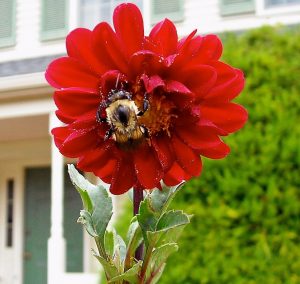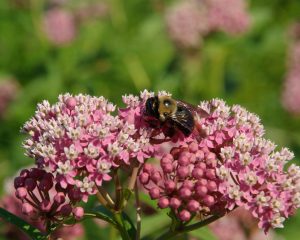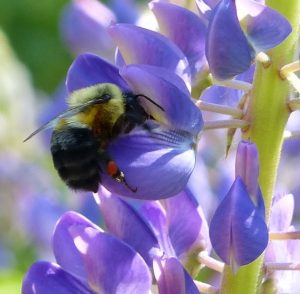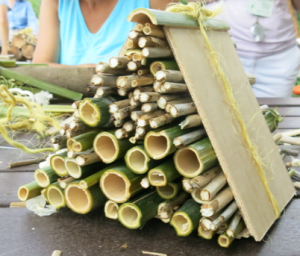When working in your garden, do you ever stop to notice bees settling on your flowers? Totally absorbed in the activity, they light atop flowers and vegetables alike. Reaching into the nectar area of each blossom, they emerge with colorful yellow pollen grains attached to their fuzzy hind legs.
Small as they may seem, bees are a “keystone species,” and have a big impact in the natural order of things, with lots of other animal species depending on them for life.
Their presence and well-being say a lot about the health of your garden – and the larger environment as well.
So if you find that your garden is buzzing with life, pat yourself on the back. That means you are doing a lot of things right!
Gardeners who find their plots humming with bees seem to share a lot of the same pollinator promoting practices–whether they are aware of it or not. See how many of these garden golden rules you employ …and let the buzzing begin:
- Say Nay to the Spray: Protect pollinators by avoiding the use of insecticides in your yard and asking whether nursery-bought plants have been treated with insecticides before you purchase them. If spraying is necessary it is best to do so after dark. Pollinators are typically not foraging at night. It is also important to not spray flowering plants, including weeds.
- Go Wild and Plant Natives: Wildflowers and other native plants are adapted to our local conditions and provide the best sources of nectar and pollen for native bees. [To learn more about which plants are best for native bees see: Blooms for Bees: How to Provide Pollen and Nectar Sources ]
-
Think Long Term: Be sure to choose a variety of plants with different bloom times to make sure bees have enough food throughout the seasons.
- Home Sweet Habitat: Gardens that are good for bees also tend to offer good nesting sites for bees. Some native bees are ground bees and nest in open ground or bare spots at the base of trees. So leaving some areas like this undisturbed will help bees thrive.
You can build a bee nest for your yard by tying together 10-20 bamboo or reed stems (or even paper straws) with one end closed (6-8” long.) ?Gather them into a bundle and hang in a protected area about 4 feet off the ground. Install bee houses close to sources of nectar and pollen
- Bold is Better: When it comes to flowers, big swaths of bright blossoms make it easier it is for bees to find the nectar and pollen they need. In addition to broad swaths of color, bees are also attracted to certain flower shapes. In fact, some flowers even contain “nectar guides” which are a type of veining or color pattern on their petals that guide insects to the nectar reward.
- Worried about stings? Gayle Henkin, Rutgers Master Gardener in Mercer County, stresses that native bees are different in many ways from wasps and imported European honey bees. She points out that most native bees are not likely to sting and far from being feared, should be welcomed into our gardens.
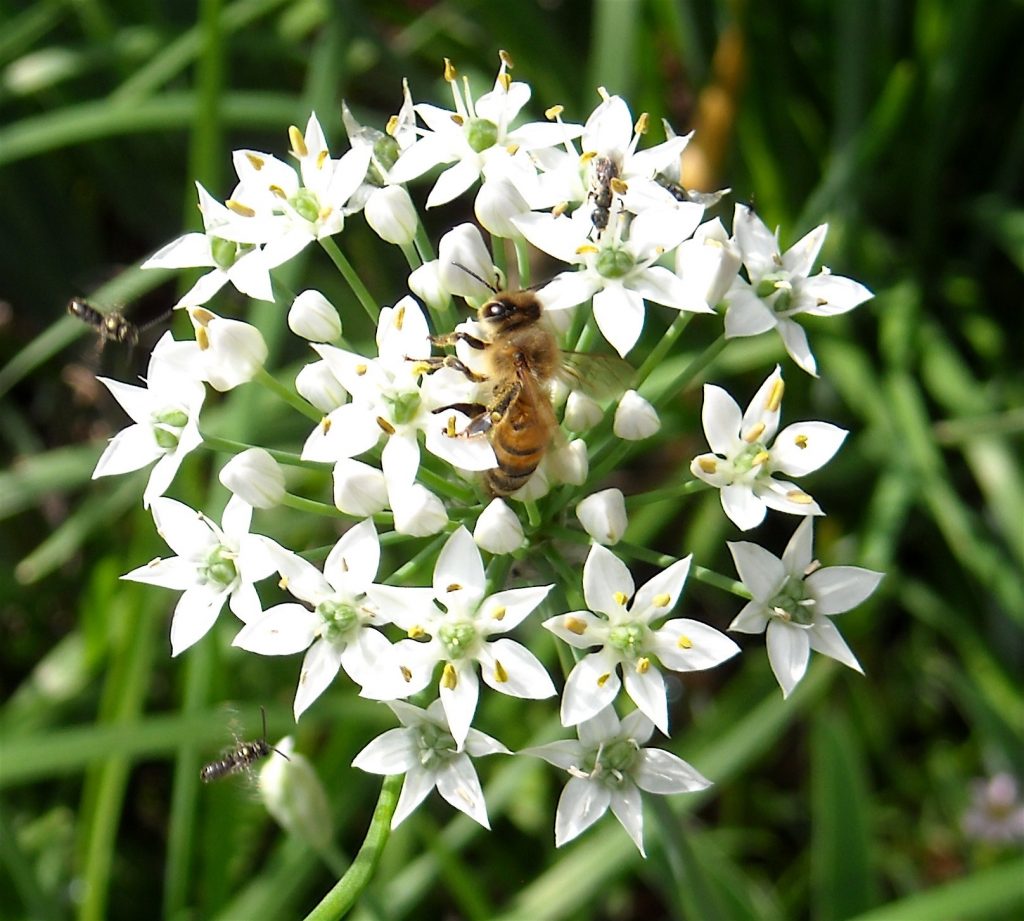
Flying under the radar: Compare the size of a non-native honey bee to the tiny sweat bees fluttering around the edges of the flower. (Photo by Maureen Amter)
More Information, see…
Supporting Bees in Your Garden and on Your Farm
Blooms for Bees: How to Provide Pollen and Nectar Sources
New Jersey Native Bees Foldout
ATTRACTING BENEFICIALS Barbara J. Bromley, Mercer Co. Horticulturist
CARPENTER BEES, Barbara J. Bromley, Mercer County Horticulturist

